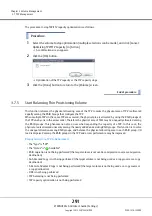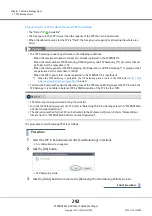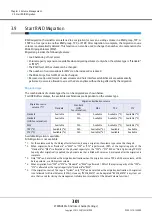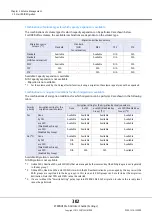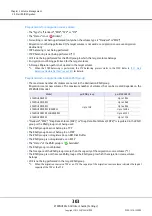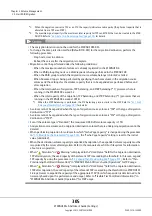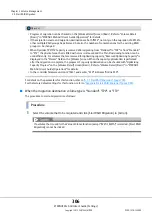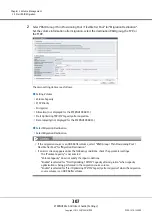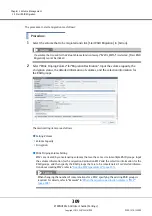
Chapter 3 Volume Management
3.9 Start RAID Migration
ETERNUS Web GUI User’s Guide (Settings)
Copyright 2015 FUJITSU LIMITED
P2X0-1270-13ENZ0
301
3.9
Start RAID Migration
RAID migration (hereinafter also referred to as migration) moves an existing volume in a RAID group, TPP, or
FTRP to a free space in another RAID group, TPP, or FTRP. After migration is complete, the migration source
volume is automatically deleted. This function can also be used to change the number of concatenations for
Wide Striping Volumes (WSV).
Migration provides the following features:
•
Load balancing of host access.
•
Volume capacity expansion is available when migrating volumes (only when the volume type is "Standard"
or "WSV").
•
The RAID level of the volume can be changed.
•
The number of concatenations for WSVs can be increased or reduced.
•
The Wide Stripe Size for WSVs can be changed.
•
Because creation and format of new volumes and host interface establishment are automatically
performed, users are allowed to access the data anytime without being affected by the migration.
Migration type
The combinations of volume types that can be migrated are shown below.
For ODX Buffer volumes, the available combinations are dependent on the volume type.
Available: Migration is available
N/A: Migration is not available
*1: For the volume used by the Storage Cluster function, during a migration the volume type cannot be changed.
*2: When migration from "Standard" or "WSV" to "TPV" or "FTV" is performed, 100% of the logical capacity of the
"Standard" or "WSV" is allocated as the physical capacity for the "TPV" or "FTV". When "Start Optimizing TPV/FTV
Capacity after migration" is enabled, the physical area that is filled with zeros can be released after the migration is
complete.
*3: Only "TPV" can be selected as the migration destination when the migration source TPV is a NAS user volume, a NAS
backup volume, or a NAS system volume.
*4: When migration from "TPV" or "FTV" to "Standard" or "WSV" is performed, 100% of the logical capacity of the "TPV" or
"FTV" is allocated as the logical capacity for "Standard" or "WSV".
*5: If the migration source FTV usage is "System", only "FTV" can be selected as the migration destination. (A migration
is not allowed for Virtual Volumes (VVOLs). However, "$VVOL_META" can be migrated. "$VVOL_META" is a system vol-
ume that is used for storing the management information (metadata) of the Virtual Volume function.)
Migration source
volume (*1)
Migration destination volume
Standard
Standard
(LUN
Concatenation)
WSV
TPV
FTV
Standard
Available
N/A
Available
Available (*2)
Available (*2)
Standard
(LUN Concatenation)
Available
N/A
Available
Available (*2)
Available (*2)
WSV
Available
N/A
Available
Available (*2)
Available (*2)
TPV (*3)
Available (*4)
N/A
Available (*4)
Available
Available
FTV (*5)
Available (*4)
N/A
Available (*4)
Available
Available
Содержание Eternus DX200F
Страница 2: ...This page is intentionally left blank ...
Страница 1082: ......





